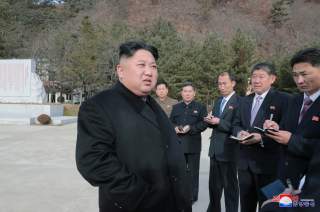The Hanoi Summit – We Asked Lyle Goldstein What Happens Next in U.S.-North Korea Relations
"Beijing and America should work to develop some new and innovative “economic carrots” that can entice Kim Jong-un without undermining the whole sanctions regime."
Editor’s Note: Looking for more opinions on where we go after the Hanoi summit? Check out all 80 expert takes on where U.S-North Korea relations go next here.
The answer to why the Hanoi Summit was a failure is no particular mystery. If one wanted to truly defuse this most dangerous situation, one would want to send experienced diplomats, preferably ones who had brokered extremely challenging international deals in the past. These emissaries, moreover, should have possessed the qualities of patience, foresight, historical and cultural sensitivity, as well as flexibility and creativity. Regrettably, that was not the team that traveled to Hanoi. Of course, the American people also would have been better served by meticulous preparations for such an important historical event. Yet, American leaders seemed to spend much more time on Venezuela than the North Korea issue during the month prior to the Hanoi Summit. That error appears to comport with the increasingly conventional U.S. political malady in which leaders focus much more on the next election than on executing pragmatic and sensible foreign policy.
I agree with the Washington Post’s observation that the Administration’s approach “has left analysts baffled” regarding any possibility for future compromises with North Korea, given an evident return to extreme positions. As a constructive counter-point, my suggestions for moving the process forward are below. First, the so-called “double freeze” situation should be maintained and strengthened, if possible. According to this tacit agreement (originally floated by China), Pyongyang halted nuclear and missile testing in return for the cessation of the large, joint South Korea-U.S. war games. Second, President Moon Jae-in of South Korea is an exceptional “soldier for peace,” and he should be supported to the utmost. Third, there is no particular danger with undertaking a process of signing a “Peace Treaty” to formally end the Korean War. While such moves would be largely symbolic, there could be benefits for atmospherics. A four-power process (including China) is advantageous and there is no major danger for U.S. interests. Fourth, North Korea should be the top priority for U.S.-China relations, and the issue should not be overshadowed by trade tensions, the South China Sea, etc. Beijing and America should work to develop some new and innovative “economic carrots” that can entice Kim Jong-un without undermining the whole sanctions regime.
Finally, while the United States and China play the leading roles (along with both Koreas obviously), very useful supporting roles can be played by both Japan and Russia. Genuine multi-polarity can help to form an environment within which Pyongyang is more comfortable. Therefore, near term mini-summit meetings for Kim with Japan’s Shinzo Abe and alternatively between Kim and Russia’s Vladimir Putin also could help to reenergize regional diplomacy. Such steps could usefully convince Kim that these questions linking disarmament and economic development are not really about distant (and dysfunctional) Washington, so much as realizing a peaceful community of nations in Northeast Asia as a whole.
Lyle J. Goldstein is Research Professor in the China Maritime Studies Institute (CMSI) at the United States Naval War College in Newport, RI. In addition to Chinese, he also speaks Russian and he is also an affiliate of the new Russia Maritime Studies Institute (RMSI) at Naval War College. You can reach him at [email protected]. The opinions in his columns are entirely his own and do not reflect the official assessments of the U.S. Navy or any other agency of the U.S. government.
Image: Reuters

